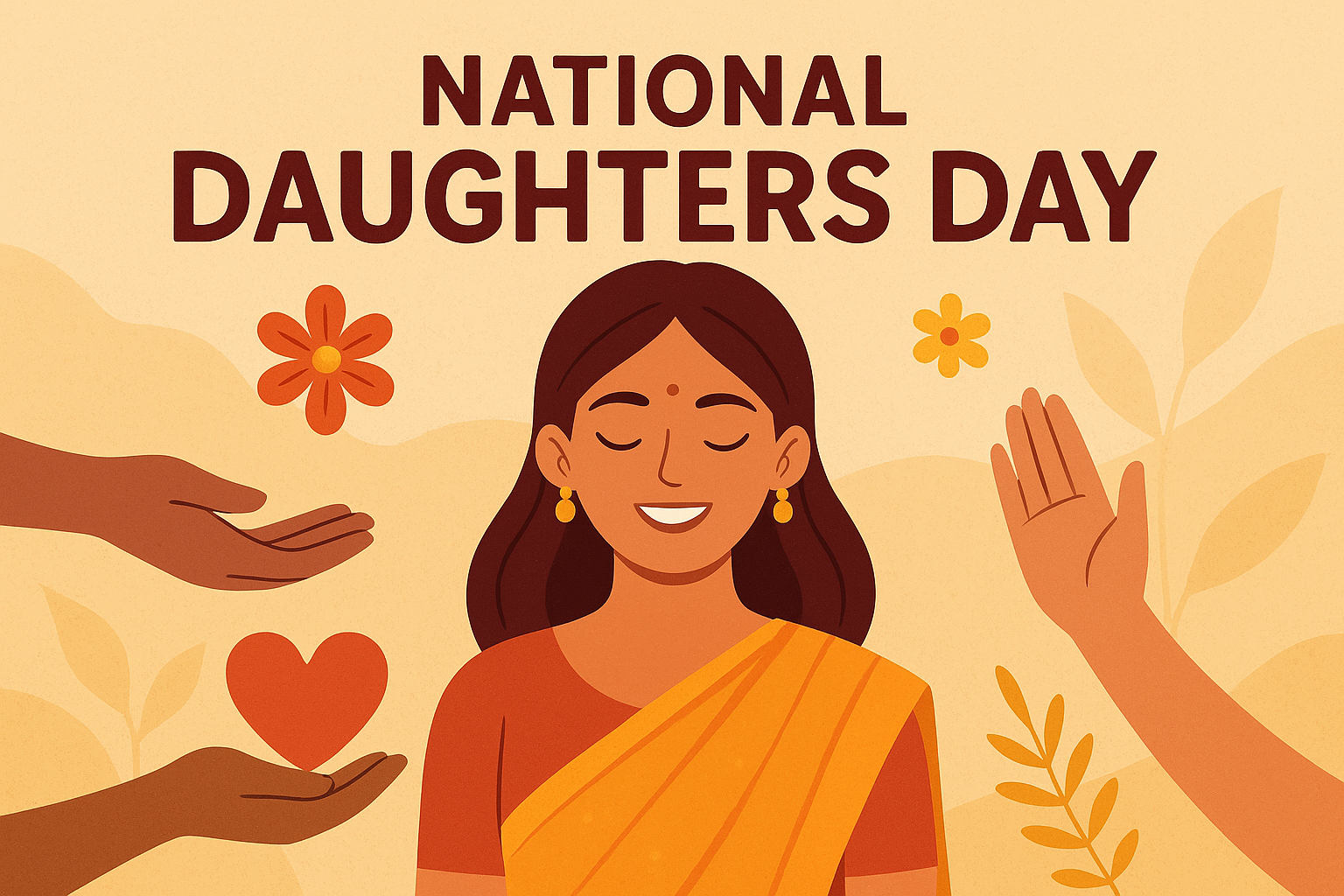Every year, National Daughters Day is celebrated to recognize the role of daughters in our families, communities, and society at large. It is not just a day of affection and appreciation but also a reminder of the ongoing struggle for gender equality, dignity, and safety for girls and women worldwide.
Origin and Background of National Daughters Day
The exact origin of National Daughters Day varies across countries. In the United States, it is observed on the fourth Sunday of September, while in India, it is also widely recognized in September. The day was initiated as a way to challenge the bias and preference for sons over daughters, which historically prevailed in many cultures.
The celebration gained momentum with social activists, women’s organizations, and awareness campaigns highlighting the need to honour daughters, break stereotypes, and reaffirm their rightful place in society.
Why Is National Daughters Day Celebrated?
- To Celebrate the Role of Daughters – It acknowledges the love, care, and strength daughters bring to families.
- To Break Gender Bias – It raises awareness against son preference and harmful practices like female foeticide and child marriage.
- To Promote Equality – The day reinforces the principle that daughters deserve the same opportunities, education, and rights as sons.
- To Strengthen Family Bonds – Families use this occasion to show affection, gift, and spend time with daughters, strengthening emotional bonds.
Importance of National Daughters Day
- Symbol of Empowerment: The celebration symbolizes empowerment and gives society a chance to reflect on how it treats its girls.
- Changing Narratives: It challenges stereotypes about gender roles.
- Awareness Campaigns: NGOs, schools, and governments use the day to highlight issues like education for girls, women’s health, and safety.
- Policy Focus: It helps push governments and communities to introduce reforms for girls’ welfare.
Where Are We Now in Gender Equality?
Globally, there has been significant progress in women’s education, representation in leadership roles, and access to employment. In India:
- Education: Girls’ enrolment in schools has increased substantially, thanks to initiatives like Beti Bachao, Beti Padhao.
- Employment & Politics: More women are entering the workforce, corporate leadership, and political representation.
- Legal Reforms: Laws against dowry, child marriage, and domestic violence have improved protection frameworks.
Yet, disparities persist:
- Gender Pay Gap: Women earn less than men for the same work.
- Representation: Women are still underrepresented in higher leadership and policymaking positions.
- Social Norms: Patriarchal mindsets and stereotypes continue to affect decision-making in households and workplaces.
Are Our Daughters Safe in Contemporary Times?
Despite progress, safety remains a critical concern.
- Crimes Against Women: Rising cases of sexual harassment, domestic violence, cyberbullying, and trafficking highlight vulnerabilities.
- Digital Age Challenges: Young girls face online threats, trolling, and exploitation.
- Public Safety: Inadequate infrastructure (street lighting, safe transport) continues to compromise women’s safety.
This makes gender-sensitive education, stricter law enforcement, and societal change more urgent than ever.
Challenges and Issues That Need Attention
- Ending Discrimination at Birth – Continued action against female foeticide and son preference.
- Access to Education & Skills – Ensuring equal access to quality education and vocational training.
- Workplace Equality – Closing the gender pay gap and creating supportive policies like maternity and childcare benefits.
- Safety and Security – Stronger law enforcement, safer public spaces, and effective redressal mechanisms.
- Health and Nutrition – Equal access to healthcare and nutrition for girls, especially in rural areas.
- Awareness & Mindset Change – Campaigns to challenge patriarchal attitudes and promote shared responsibilities.
Where Government Policy Should Focus
- Strengthening Girl Child Schemes: Expand programs like Beti Bachao, Beti Padhao, Sukanya Samriddhi Yojana, and scholarships for girls.
- Legal Enforcement: Strict implementation of anti-trafficking, anti-harassment, and child protection laws.
- Digital Safety Policies: Ensuring strong cyber laws to protect young girls from online abuse.
- Workplace Inclusion: Policies to ensure equal pay, representation, and safe working environments.
- Community Engagement: Programs encouraging families and communities to become partners in daughters’ progress.
Conclusion
National Daughters Day is not just a celebration, it’s a responsibility. It reminds us of the importance of respecting, empowering, and protecting daughters so that they grow with dignity, pride, and equal opportunities.
While progress in gender equality is visible, much remains to be done to make society truly just and safe for daughters. With government initiatives, societal mindset change, and strong advocacy, the dream of a gender-equal and sensitive world for daughters can be achieved.

Leave a Reply